Skip to content
The OHMS Application: The OHMS application, integrated with , is the free, online space where the preparation of resources is completed. This is the back end, web-based application where metadata is imported or created, transcripts are uploaded and synchronized, or descriptive indexes are created. Upon completion, the interview record, which includes the synchronized transcript and/or time-coded index, is exported as a simple XML file. When this XML file is located on a web server, it interfaces with the content management system through the OHMS Viewer. OHMS is integrated into the Aviary Platform. Accounts are free.
The OHMS Viewer: The OHMS viewer is where the public interacts with a resource prepared for public access using the OHMS Application. When a user clicks on the appropriate link, the OHMS viewer loads. The viewer combines select interview-level metadata and the intra-interview-level or segment-level metadata with the audio or video player. The OHMS viewer utilizes a built-in player for delivering the directly-linked audio/video. Additionally, OHMS is also designed to work with Kaltura, YouTube, Vimeo, Avalon, and SoundCloud streaming solutions. See more information, go to .
 1. OHMS Overview
1. OHMS Overview
Search
Overview
OHMS is a system designed to enhance access to online oral histories (or other time-based media) efficiently and affordably. The primary purpose of OHMS is to create a framework, space, and user interface to enhance the search and discovery of information in online audio and video by connecting textual searches of a synchronized transcript or of an index to the corresponding moments in the online audio and video sources. OHMS was designed to create an interoperable and sustainable framework using simple, open formats and technologies. There are two primary components of the OHMS system:
The OHMS Application: The OHMS application, integrated with the Aviary platform, is the free, online space where the preparation of resources is completed. This is the back end, web-based application where metadata is imported or created, transcripts are uploaded and synchronized, or descriptive indexes are created. Upon completion, the interview record, which includes the synchronized transcript and/or time-coded index, is exported as a simple XML file. When this XML file is located on a web server, it interfaces with the content management system through the OHMS Viewer. OHMS is integrated into the Aviary Platform. Accounts are free.
The OHMS Viewer: The OHMS viewer is where the public interacts with a resource prepared for public access using the OHMS Application. When a user clicks on the appropriate link, the OHMS viewer loads. The viewer combines select interview-level metadata and the intra-interview-level or segment-level metadata with the audio or video player. The OHMS viewer utilizes a built-in player for delivering the directly-linked audio/video. Additionally, OHMS is also designed to work with Kaltura, YouTube, Vimeo, Avalon, and SoundCloud streaming solutions. See more information, go to Section 12.
1.1 OHMS Viewer Examples
The following links are examples of the OHMS viewer in action:
OHMS Viewer: synchronized transcript
OHMS Viewer: interview index
OHMS Viewer: synchronized transcript + interview index
OHMS Viewer: bilingual index
OHMS Viewer: transcript + translation
1.2 OHMS Workflow Summary
OHMS Application (preparing for public access)
Create OHMS/Aviary account (free) https://www.aviaryplatform.com/pricing#ohms-aviary-subscription
Host audio or video in a location where OHMS can access/interact with the media. See Section 4.2
Log in to OHMS/Aviary Application account.
Import or create new OHMS “Interview” record.
Link OHMS record to online audio/video
Synchronize transcript or index the interview
Save work
Export OHMS XML file when work is completed
OHMS Viewer (making interviews public)
Install and configure the OHMS Viewer on a server.
Place XML file into directory within installation of the OHMS Viewer
From the Content Management System, link to the OHMS XML file which presents utilizing the OHMS Viewer.
Through the Content Management System the user interacts with interview via the OHMS Viewer
1.3. OHMS Reminders
The OHMS transcript sync and indexing utilities create time-dependent metadata. You should not make any changes to the media time-code after processing in OHMS. Any edits that change the duration of the interview will alter the location of the sync markers and index points, and thus disrupt the correspondence between markers and content.
It is strongly recommended that you preserve your OHMS XML files following export. These will be critical for re-importing for updating information in a record or fixing a rare typo. Form more info on exporting OHMS XML files, click here.
1.4. OHMS Demos and Webinars
https://aviary.aviaryplatform.com/embed/media/209331
https://aviary.aviaryplatform.com/embed/media/262967
Overview
09/28/2023
OHMS is a system designed to enhance access to online oral histories (or other time-based media) efficiently and affordably. The primary purpose of OHMS is to create a framework, space, and user interface to enhance the search and discovery of information in online audio and video by connecting textual searches of a synchronized transcript or of an index to the corresponding moments in the online audio and video sources. OHMS was designed to create an interoperable and sustainable framework using simple, open formats and technologies. There are two primary components of the OHMS system:


Want to print your doc?
This is not the way.
This is not the way.

Try clicking the ⋯ next to your doc name or using a keyboard shortcut (
CtrlP
) instead.